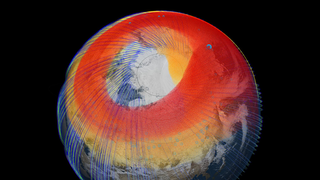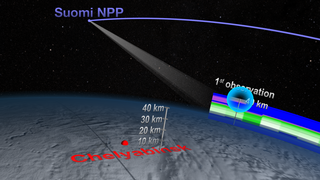Chelyabinsk Bolide Plume as seen by NPP and NASA Models
NPP's Ozone Mapping and Profiler Suite (OMPS) Limb instrument first observed the dust plume from the explosion about 1,100 kilometers east of Chelyabinsk, due to the location of the satellite's orbit. NPP's second observation was farther west, close to Chelyabinsk, because the spacecraft's orbit moves from east to west. The third observation of the plume occurred the day following the event. The OMPS instrument could only see the plume during the daytime, and the NPP orbit had progressed westward away from the plume and into night by the time it was again over the plume.
The OMPS Limb instrument observations are made by looking backward (relative to NPP's orbit) toward the Earth's limb. The instrument makes measurements through three separate slits. Early on, some of the plume observations where only made in one or two of the slits, but later observations tended to include all three slits as the plume stretched out.

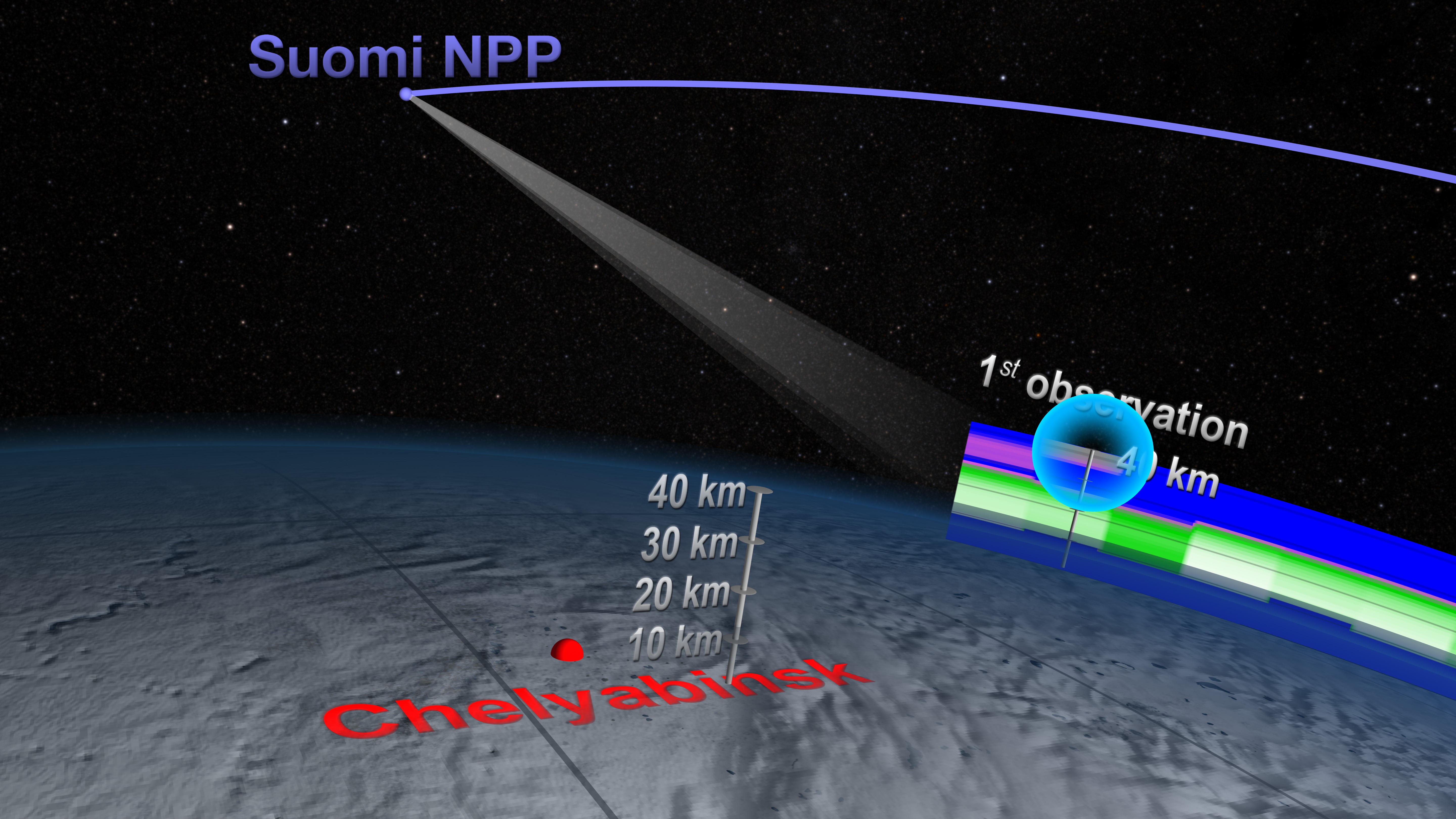
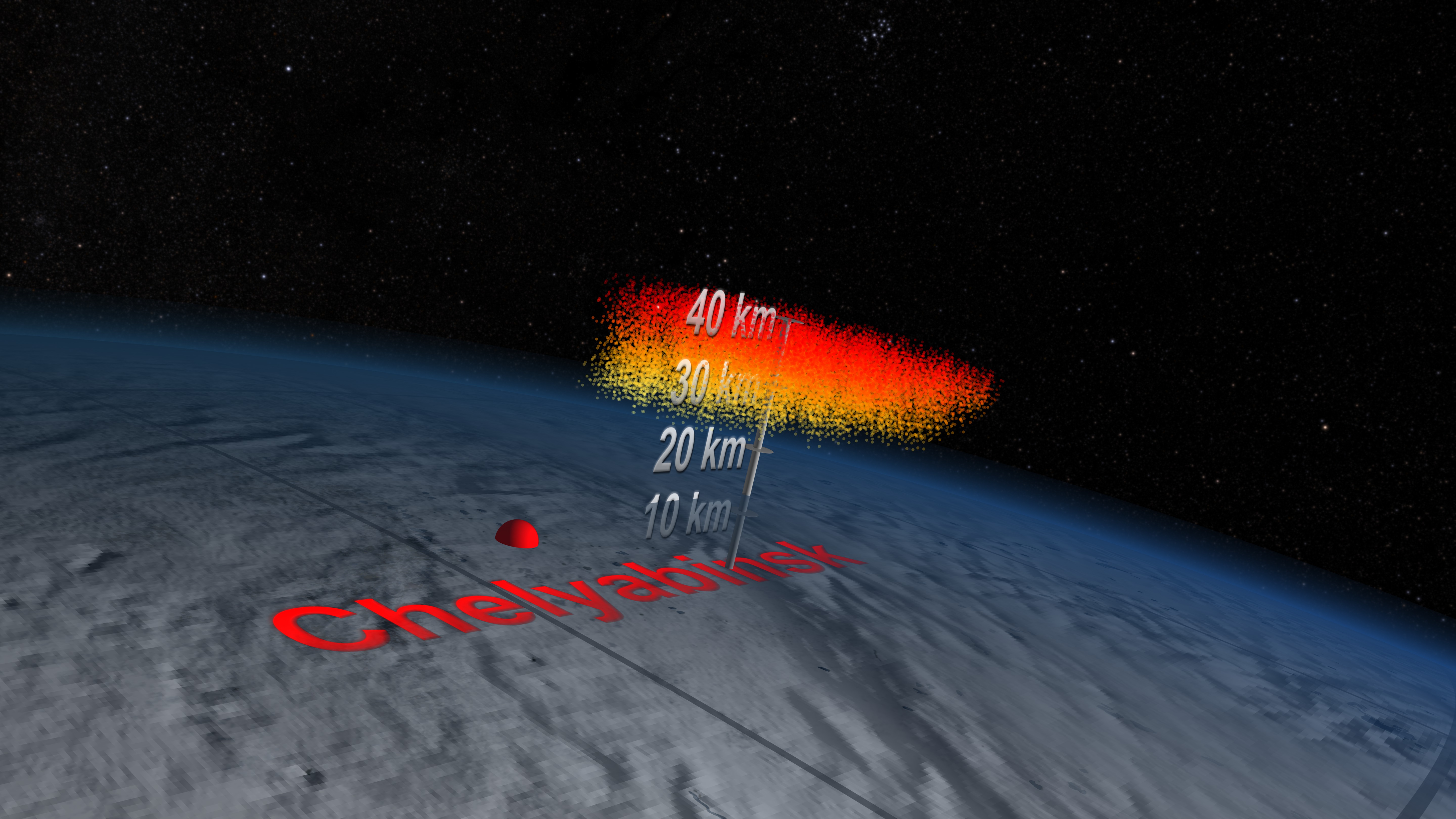
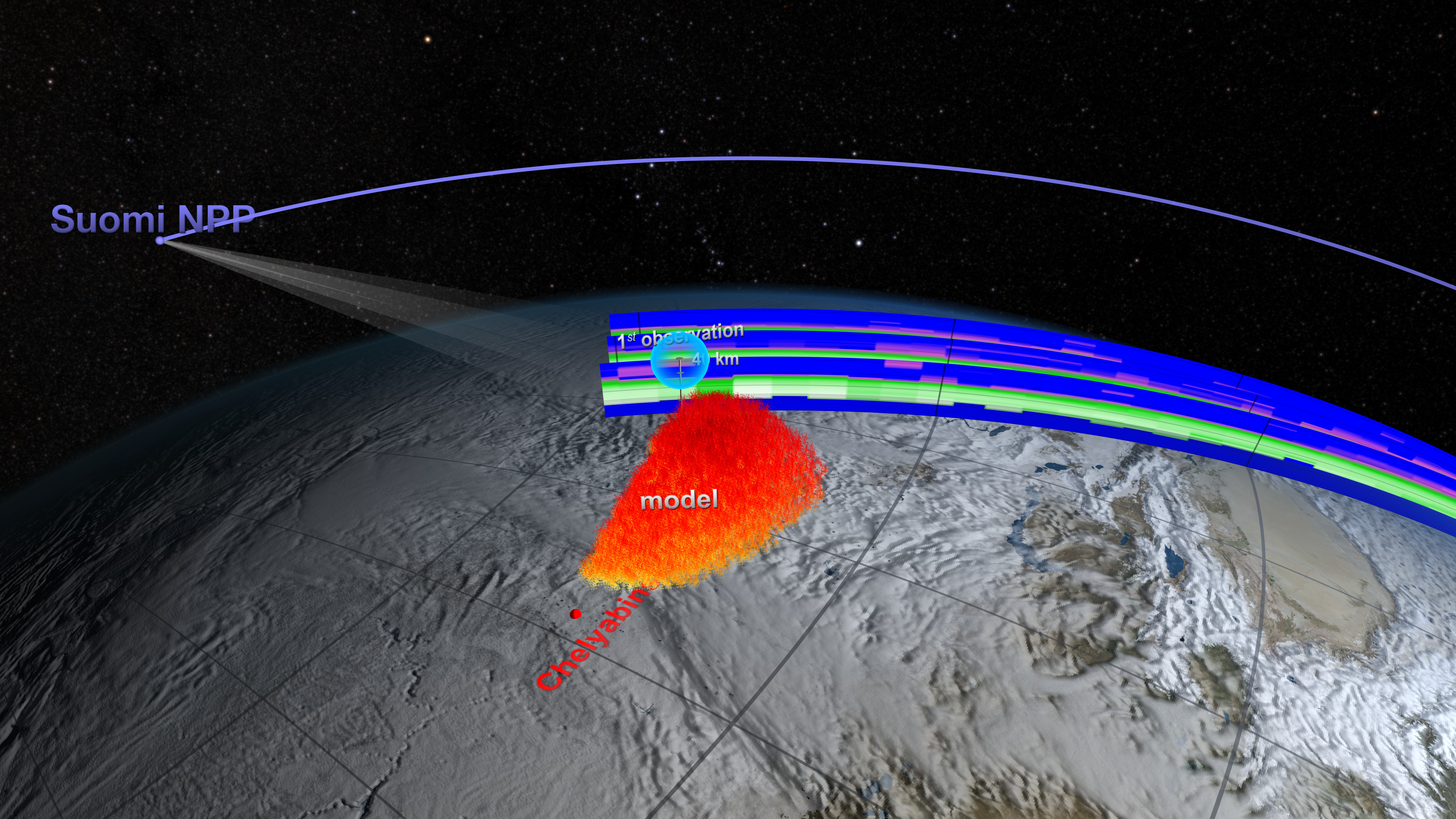


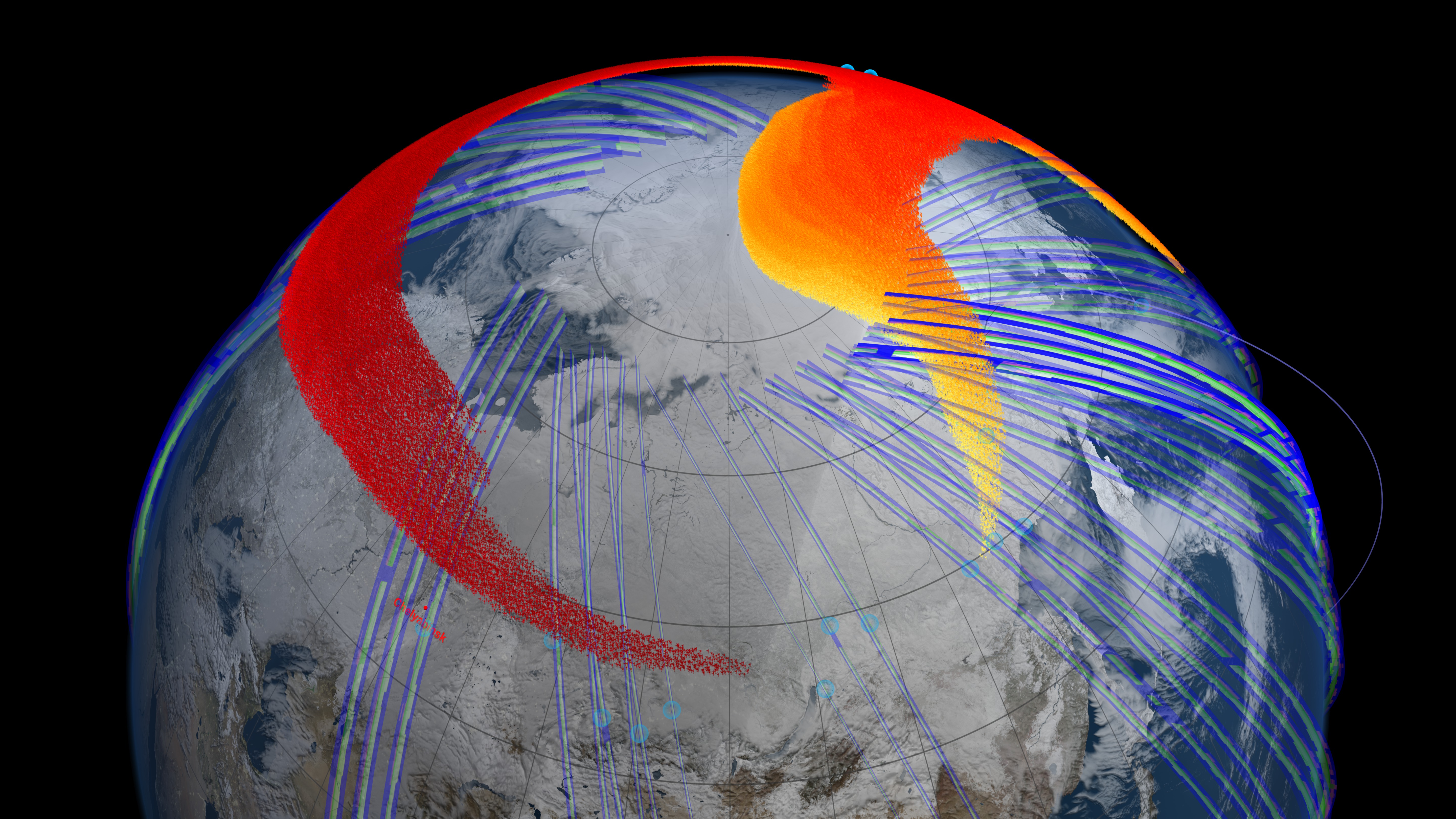
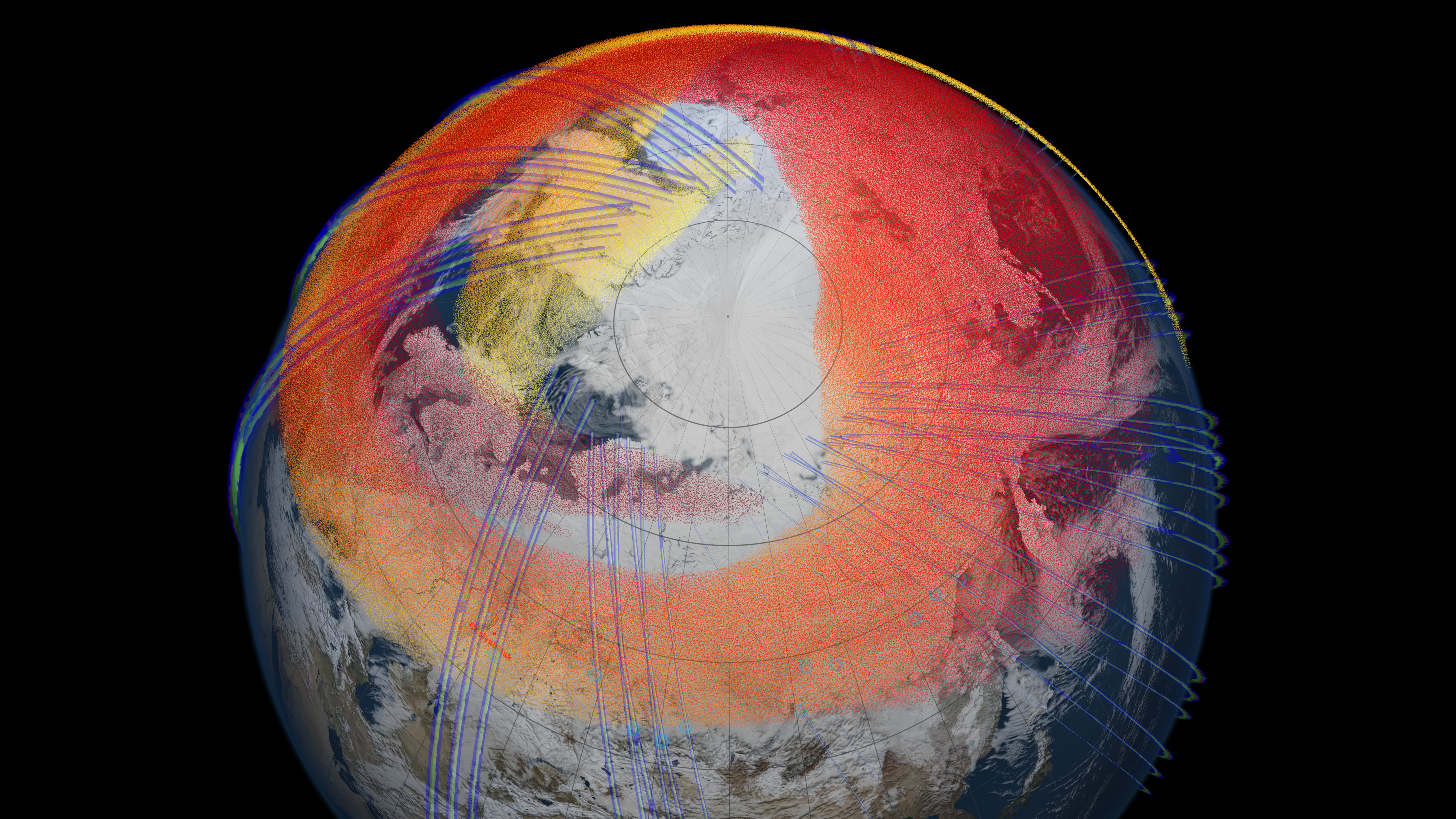
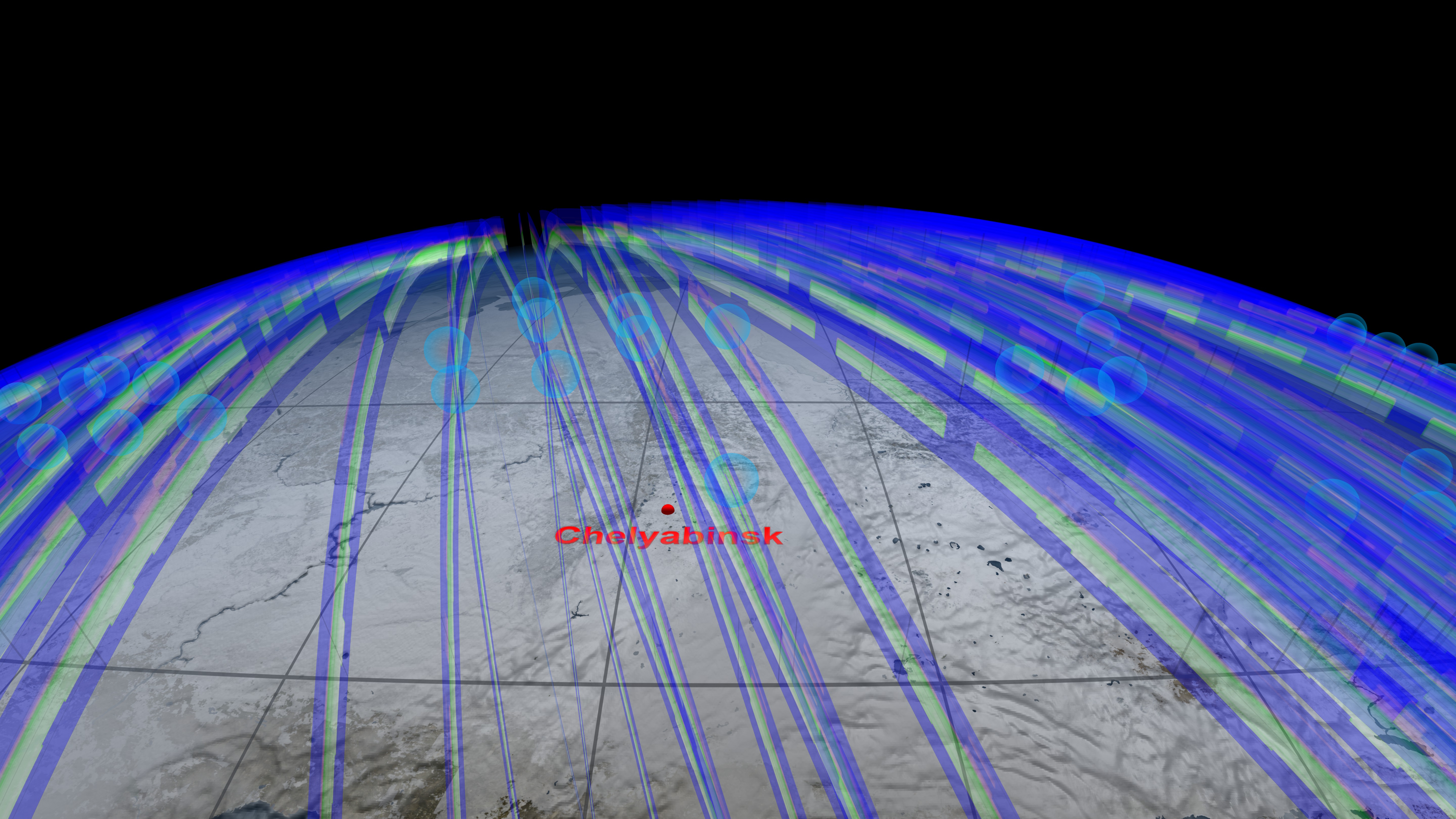


Related
For More Information
Visualization Credits
Horace Mitchell (NASA/GSFC): Animator
Silvia Stoyanova (USRA): Narration
Mike Velle (HTSI): Narrator
Silvia Stoyanova (USRA): Producer
Nick Gorkavyi (SSAI): Scientist
Paul Newman (NASA/GSFC): Scientist
Arlindo M. Da Silva (NASA/GSFC): Scientist
NASA's Goddard Space Flight Center Scientific Visualization Studio
https://svs.gsfc.nasa.gov/4094
Missions:
NPP
Suomi NPP
Data Used:
CelesTrak Spacecraft Orbit Ephemeris
Ephemeris - 2013/02/12 to 2013/03/02GEOS-5 Atmospheric Model on the Cubed-Sphere also referred to as: GEOS-5 Cubed-Sphere
Model - NASA GMAO - 2013/02/15 to 2013/02/25Suomi NPP/Ozone Mapping Progiler Suite (OMPS)/Limb Data
Observed Data - NASA - 2013/02/15 to 2013/04/12This item is part of this series:
Narrated Movies
Keywords:
SVS >> HDTV
GCMD >> Earth Science >> Solid Earth >> Rocks/Minerals >> Meteorites
SVS >> Hyperwall
DLESE >> Narrated
SVS >> GEOS
NASA Science >> Earth
GCMD keywords can be found on the Internet with the following citation: Olsen, L.M., G. Major, K. Shein, J. Scialdone, S. Ritz, T. Stevens, M. Morahan, A. Aleman, R. Vogel, S. Leicester, H. Weir, M. Meaux, S. Grebas, C.Solomon, M. Holland, T. Northcutt, R. A. Restrepo, R. Bilodeau, 2013. NASA/Global Change Master Directory (GCMD) Earth Science Keywords. Version 8.0.0.0.0
